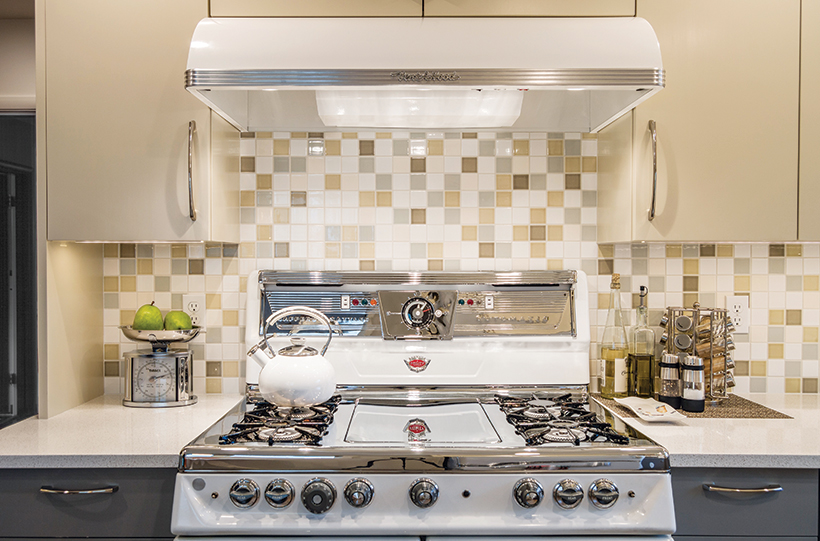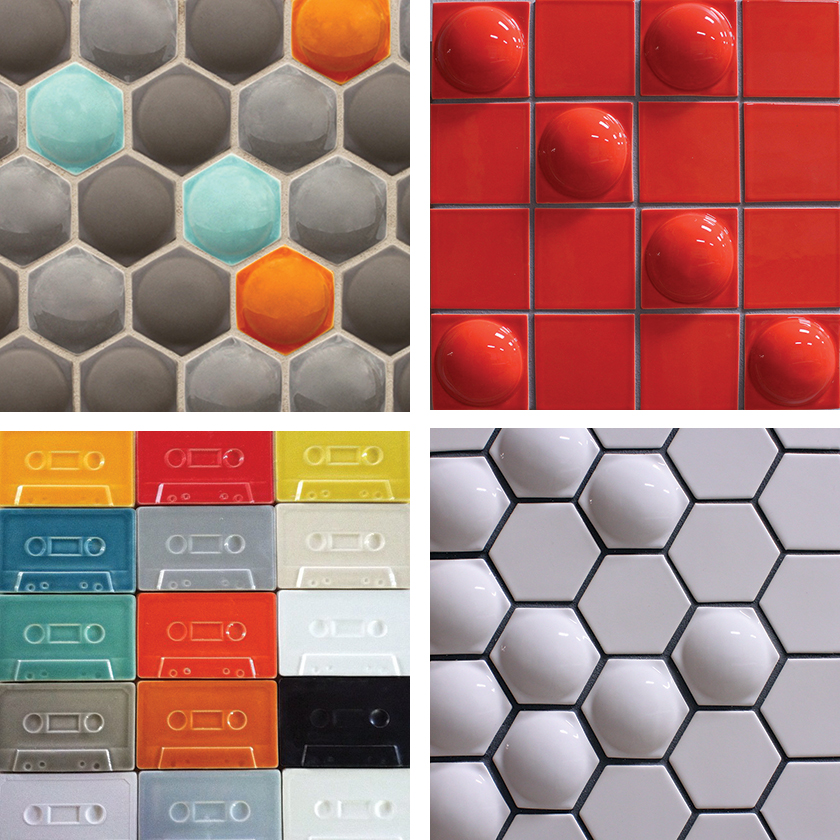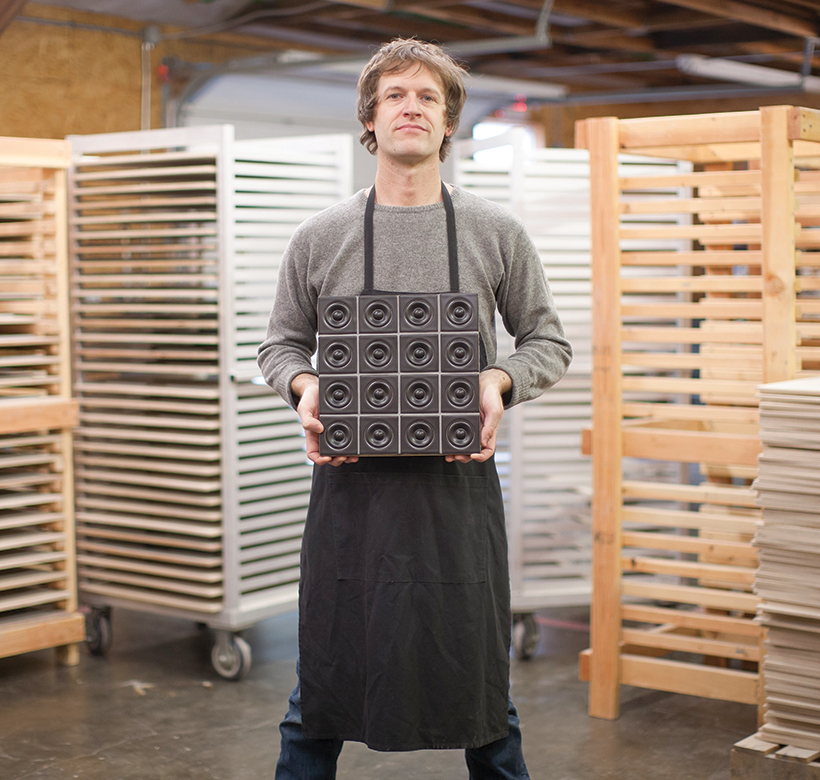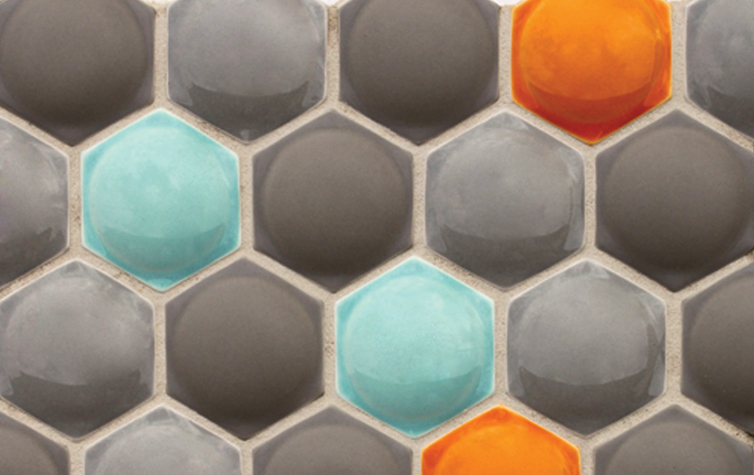In 2006, artist Jason Coleman started a tile company with his wife and business partner, Megan. They specialized in recycled glass tiles, but in 2010 as they refocused their brand and experimented with ceramic tile, Clayhaus was born.
“Our name derives from the Bauhaus movement and its influences on modernist architecture and modern design,” Jason says. He admits, “We also just think it’s a cool name.”

Handcrafted Designs
“Ceramics is in my blood. My parents, renowned ceramicists Tom and Elaine Coleman, were true leaders in the ceramics arts movement of the 1960s and ‘70s,” Jason says. “Being raised in this type of home environment influenced me tremendously.”
Simply making the tiles serves as inspiration for Jason. Everything the Clayhaus team uses to create their tiles is made in-house, and they turn to little in the way of automation. Their signature crisp, bright look is made possible in part by the white Earthenware clay body used. Once glazed, it creates the perfect modern aesthetic.

To make the tiles, a machine is used to pull the clay out into flat ribbons, which is then pressed into the various shapes and designs. There is no rush in the Clayhaus process. Once cut, the tiles are given time to cure before being bisque-fired, glazed and loaded into kilns. Not even their glazes are outsourced. Custom created glaze formulas means that Clayhaus has a wide array of colors in both glossy and matte finishes to help their clients get the perfect look.
“Every tile is handcrafted. Every glaze is made from scratch. And every installation has its own meaning,” he says.
Uniquely Professional
What separates Clayhaus from other tile companies is their collection of simple designs with bold glazes. Drawn to the emotional response created by simple combinations of minimal geometric shapes and bold color, Jason says, “…there is nothing more visually striking than a large fi eld of mosaic tile with undulating color and texture. That’s what Clayhaus is all about.”

Recently, Clayhaus partnered with Portland product designer Stephanie Dyer. She created their “Topo Collection,” a line of six different 6-by-6-inch dimensional patterned tiles. “Collaboration is more interesting to me than just holing up and making more of my own designs,” Jason says. “That’s what makes you a good company—as many perspectives as you can get.”
Turning passion and skill from a two-person business into a thriving company comes with lessons learned. For Jason and Megan, they underestimated how difficult it would be to build a team of artists “who could understand and appreciate the level of hard work and commitment that goes into crafting the type of high-end tiles we make for our clients.”
“It can be challenging at times when we get caught up in the production cogs and the creative process gets put on the back burner,” Jason says. When this happens, Jason is pulled back to his art form when a new idea pops up or when he comes across a new piece of art that moves him. “I am lucky to lean on my partner Megan for managing the business on a daily basis,” he says.
For more on the designs, collections and glazes of Clayhaus, visit clayhaustile.com.












